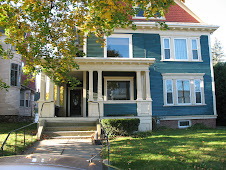Monday, June 29, 2009
The Secret Lives of Bees and the Black Madonna
This past winter I watched "The Secret Life of Bees" with my mother, daughter, niece, and sister. I loved the book and was equally touched by the movie. It felt particularly special to be sharing this film with the women in my family as two primary themes of both the book and movie had to do with the sacred feminine and the enduring love of families. What made "The Secret Life of Bees" the most significant to me was that it was my first exposure to the Black Madonna. Images of the black Madonna have known to exist in numerous European countries since as early as 50 AD.
In an interview with Heidi Schlumpf about the Secret Life of Bees, Sue Monk Kidd shares, "It's about a girl who has lost her mother and who finds these women who teach her about a Black Madonna A Black Madonna or Black Virgin is a statue or painting of Mary in which she is depicted with dark or black skin. This name applies in particular to European statues or pictures of a Madonna which are of special interest because her dark face and hands seem to need and love her into healing. Lily's great quest was for her mother, but not only for an earthly mother. It took me a while to understand this as I wrote it, that she was longing--as most all of us are--for a larger mother. We're all really looking for that great mother.
So there were two quests going on--one, for the actual mother, whose loss had left this terrible hole in her. I don't know about that particular quest personally because my own mother is still alive at the age of 82. But as I was writing I understood that I did know about that other longing for this larger, we could say, spiritual mother. In the book I let the Black Madonna carry all that."
Heidi: "What exactly are Black Madonnas?"
Sue Monk Kidd: "There are hundreds of these images of dark-skinned Black Madonnas in Europe, and they are some of the most ancient images we have of Mary. The most well known is probably Our Lady of Czestochowa in Poland. Many of them are in great Gothic cathedrals, like Chartres, France, often in the crypts.
There are a lot of inventive speculations about why they are black. Some people have said it's about candle smoke (I think that theory has been more or less rejected), but some scholars believe they are black because they have connections to pre-Christian goddesses, many of whom are pictured black. Their history suggests that there may have been a kind of underground nerve center for worshiping the divine feminine within the medieval church, and it often came through in the Black Madonna.
If that is the case, we've got a very powerful amalgamation going on, a blending of the Christian Mary and these old earth goddesses. And there's an amalgamation going on not just in her history, but in her spirituality, in her mythology, in the stories that evolve around her and in the way people relate to her...People ask, "Who was the queen bee in the story? Was it the Black Madonna?" It really alternated. Sometimes it was August, who stood in as that earthly Black Madonna. Sometimes it was the Black Madonna reflected in the masthead. But ultimately as I tried to portray in the end of the novel, it's something within us. As August said to Lily, you have to find that mother inside yourself."
In The Hidden Spirituality of Men, Episcopalian priest and author, Matthew Fox when writing about one aspect of the black Madonna observes, "The black Madonna calls us to grieve. The black Madonna is the sorrowful mother, the mother who weeps tears for the suffering in the universe, the suffering in the world, the brokeness of our very vulnerable hearts... She invites us to enter into our grief and name it and be there to learn what suffering has to teach us. Creativity cannot happen, birthing cannot happen, unless we pay attention to the grieving heart. Only by passing through grief can creativity burst forth anew. Grieving is an emptying, it is making the womb open again for new birth to happen..." Fox offers several other descriptions of the black Madonna archetype and what she calls us to do in the twenty- first century which you can read online at “The Return of the Black Madonna" however his observations connecting her to the transformative possibilities inherent in grief are especially meaningful to me.
Subscribe to:
Post Comments (Atom)




No comments:
Post a Comment